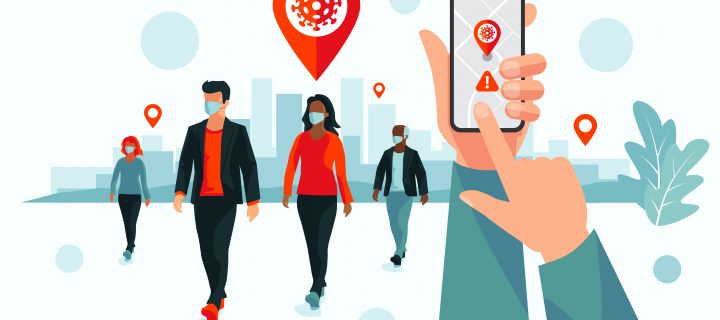This method of tracking the coronavirus digitally has worked very well in New Zealand, Vietnam, and other countries.
Contact tracing has been a great boon for many communities. In order to stem the spread of the novel coronavirus, many places have tried diligently to track who is sick through steady, immediate testing. In addition to this, authorities have gone one step further. Some countries have also identified, as far as possible, all those people who may have come in contact with a person diagnosed with COVID-19. When this is done, those contacts can be alerted. These people can monitor themselves for symptoms, and go into a preventive quarantine. This is the basis of contact tracing. At a high level it may be cumbersome, but it seems to work.
Contact tracing has been implemented with success in New Zealand, South Korea, Vietnam, some countries in Africa, parts of Europe, Russia, China, India, and in countries in Southeast Asia. In some places, participation in contact tracing has been mandatory. Authorities use digital apps to monitor where the virus is traveling. In China, for instance, it works like this: every person creates a profile on the contact tracing app their area is using. Citizens do this by entering their personal information into an app. Public locations such as malls, stores, libraries and workplaces each have a unique QR code. Once a person arrives at work, for instance, they must scan the location’s QR code on display, with their phone.
Related: Some of the Craziest Social Distancing Devices
They also must show a certain color in the app on their phone to an attendant at the door, in order to be allowed to enter. If the color of acceptance is green, and their phone shows green, they can go inside. Red or yellow? You cannot enter. These colors mean you have recently come in contact with someone who has been diagnosed with COVID-19 and you should be quarantining at home, or taking other precautions. You are not safe to enter.
This system can really work. It creates a minute-by-minute record of where people are in public. If someone in a workplace should fall sick and be diagnosed with COVID-19, all those who were recorded as present in that office at the same time can be alerted through their phone that they have been exposed.
Obviously, this type of system would be criticized these days by many in the west. It not only infringes on people’s freedom of movement, but it “blacklists” them for a period of time, until they are given the green light to go out. The west has used this type of system before, however. In the time of Scarlet fever, desperate efforts were made by health authorities in the US to contain this potentially deadly illness, as they had no medicine on-hand to treat it.
Authorities did this by placing paper notices on the doors and windows of homes in which a sick person was living. It was illegal to remove this notice. One had to wait until a card was received in the mail from the local health authorities, indicating their quarantine was over before the notice could be removed and the family in the home was permitted to go out.
Related: What Happens When You Get a Coronavirus Test
There are degrees of contact tracing. In New Zealand, the use of contact tracing apps has been encouraged. Citizens have not been forced to comply, however. Many have, though. As a result, the country became coronavirus-free in early June. A few new cases of the virus have popped up since, it is true. These have prompted worries that the virus may return here en masse, but the country’s success in fighting COVID-19 is something that places like the US are not even coming close to.
Who else is shining? Vietnam has not had a single coronavirus death, to date. Astoundingly, there are almost 100 million people living in this country. In light of this, there are some things to consider. The degree to which those in North America feel they need to protect their freedoms may be something to reconsider. Contact tracing may infringe on personal freedoms, but really, when you know it could be saving lives, this seems like a greater freedom to be gained. There aren’t many rights to be had once you or your loved one is dead. This may sound dire, but for many, the situation is. It could be time to buckle down, before things grow more out of control than they already are.
photo credits: Redkey USB/Shutterstock.com












